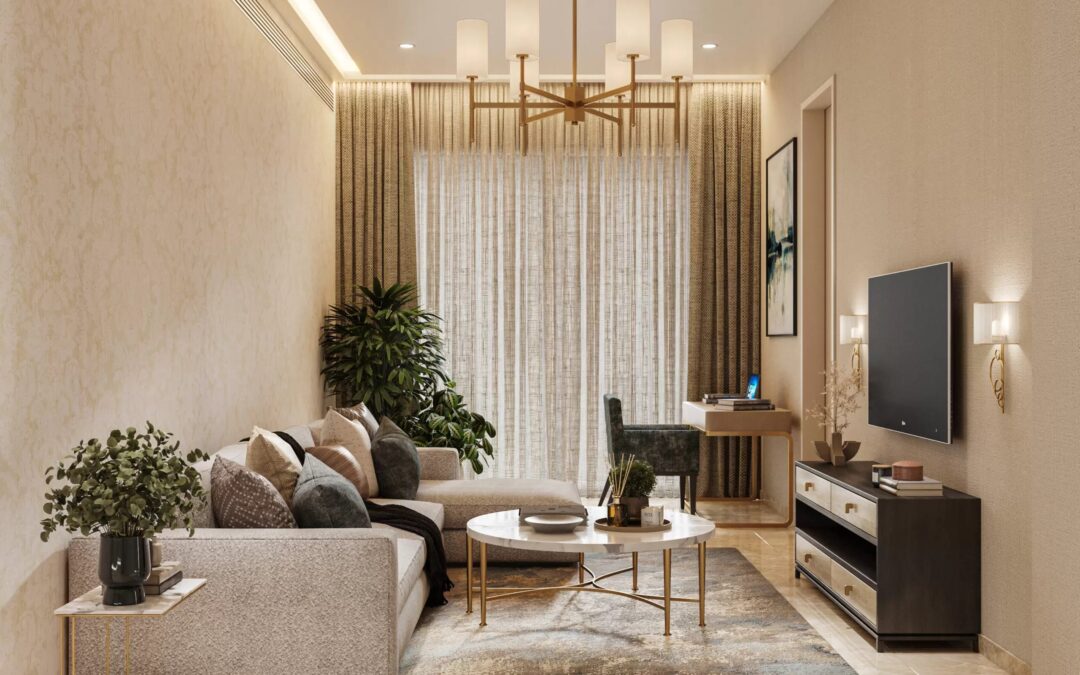In the world of high class interior design, the subtle interplay of texture and materiality is paramount in crafting spaces that exude luxury, sophistication, and comfort. The choice of materials and the textures they embody can transform an ordinary room into a masterpiece of design, where every surface invites touch, and every detail speaks of elegance. Hence read the following article till the end to know more.
The Role of Texture in Luxury Interiors
Texture is more than just a visual element; it is a tactile experience that defines the character of a space. In luxury interiors, the use of diverse textures—from the roughness of raw stone to the softness of velvet—adds depth and dimension. It creates a sensory journey, where the contrast between smooth and coarse surfaces engages the senses, making the space not only visually appealing but also emotionally resonant.
For example, a high class interior design might juxtapose a sleek marble countertop with a richly textured wooden floor. This contrast not only highlights the beauty of each material but also creates a dynamic environment that feels both sophisticated and inviting. Interior designing firms in Mumbai, known for their attention to detail, often employ this technique to enhance the allure of luxury residences and commercial spaces.
Materiality: The Foundation of Luxury
Materiality refers to the inherent qualities of the materials used in interior design. In luxury interiors, the choice of materials is crucial, as it reflects the overall theme and ambiance of the space. Premium materials like marble, granite, silk, and leather are often chosen for their durability, beauty, and the statement they make about quality and refinement.
The weight and feel of these materials underhand, their natural patterns, and the way they age gracefully over time contribute to the opulence of the space. For instance, the cool touch of marble in a bathroom, or the supple feel of leather in a lounge area, elevates the interior from mere functionality to a luxurious experience.
The Synergy Between Texture and Materiality
In the best examples of high class interior design, texture and materiality work together to create a harmonious and cohesive environment. Interior designing firms in Mumbai, with their expertise in blending traditional and contemporary elements, understand the importance of this synergy. They meticulously select materials and textures that complement each other, ensuring that every element within the space contributes to a unified aesthetic.
For example, a living room might feature a combination of velvet upholstery, polished wood furniture, and a stone fireplace. Each material brings its own unique texture, and together they create a space that is rich, layered, and full of character. The result is an interior that feels both luxurious and personalized, a true reflection of the client’s tastes and lifestyle.
Conclusion
The importance of texture and materiality in luxury interiors cannot be overstated. These elements are the foundation of high class interior design, influencing not only the look but also the feel and function of a space. Interior designing firms in Mumbai, with their deep understanding of these principles, are adept at creating interiors that are both timeless and on-trend, offering clients a living experience that is truly luxurious. By thoughtfully integrating diverse textures and premium materials, these firms transform spaces into sanctuaries of elegance and comfort, where every detail is a testament to quality and design excellence.
FAQs
Why is the combination of texture and materiality important in high class interior design?
The combination of texture and materiality creates a layered, cohesive environment. When these elements are thoughtfully integrated, they enhance the visual and tactile experience, making the space feel more sophisticated and harmonious.
How do interior designing firms in Mumbai incorporate texture and materiality into their projects?
Interior designing firms in Mumbai are known for blending traditional and contemporary elements. They carefully select materials and textures that complement each other, ensuring that the space reflects both luxury and the client’s personal style.
Can texture and materiality be used to create a specific mood in a luxury interior?
Yes, different textures and materials can evoke specific emotions and moods. For example, soft, plush textures like velvet can create a sense of comfort and coziness, while sleek, hard materials like glass and metal can convey modernity and elegance.
What are some examples of textures commonly used in luxury interiors?
Common textures in luxury interiors include smooth marble, textured stone, soft velvet, rich leather, polished wood, and intricate textiles. These textures add variety and interest to the space, contributing to its luxurious feel.
How do material choices impact the longevity of a luxury interior?
The use of high-quality, durable materials ensures that a luxury interior remains timeless and retains its appeal over the years. Materials like marble, granite, and hardwood not only look beautiful but also age gracefully, adding value to the interior over time.
What are some tips for choosing the right materials and textures for a luxury interior?
When choosing materials and textures, consider the overall theme and purpose of the space. Opt for high-quality, natural materials that offer both aesthetic appeal and durability. Balance different textures to create contrast and interest, while ensuring they complement each other to maintain a cohesive look.

